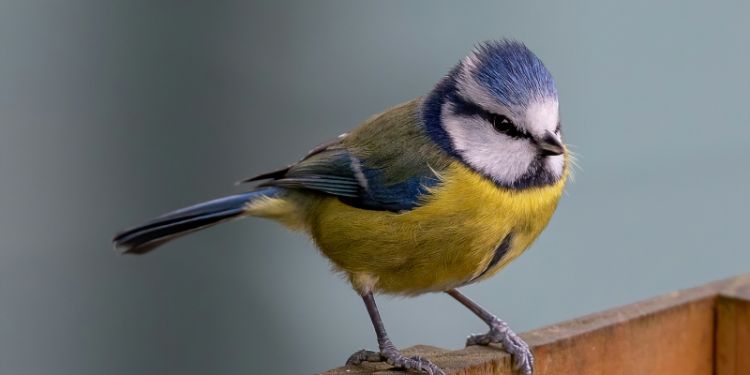Blue tit population booms with moths on the menu

The importance of moth caterpillars for common garden birds has been revealed in a new study.
The research, which has been led by University of Reading, in collaboration with RSPB and University of Leeds as part of DRUID (Drivers and Repercussions of UK Insect Declines), found that increased moth populations correlated with increased numbers of blue tits.
The results, derived from 23 years’ of bird and insect population data, were published on Tuesday 23 January in Ecology Letters.
Insect abundance directly impacts songbird numbers from year to year. When moth caterpillars are large in number, blue tit parents can easily find food for their demanding chicks. When moth numbers crash it gets much harder for birds to find enough insects and raise as many young.
Winter moth diet
The team of researchers from the University of Reading, RSPB, and the University of Leeds combined data from two UK-wide insect and bird monitoring schemes - the Rothamsted Insect Survey and the Breeding Bird Survey.
The Rothamsted survey has tracked moth populations using light traps since 1968, while the Breeding Bird Survey has relied on volunteers counting birds annually across the UK since the 1990s.
By linking the two datasets together, the research team were able to see how fluctuations in moth numbers influenced blue tit population changes over 23 years.
The results showed that blue tit populations grew more in years when moth numbers were higher, indicating that the abundance of moth caterpillars impacts blue tit breeding success. Among the moth species linked to blue tit success was the winter moth, which emerges early in spring and is known to be a key food source.
The study also found regional variation in important moth prey species for blue tits, suggesting that conservation efforts need to consider local differences.
The researchers hope their approach combining insect and bird monitoring data could be applied to other species, helping to map food web relationships and identify vulnerable points across ecosystems.
Professor William Kunin, Professor of Ecology and Head of DRUID, said:
The DRUID project team applied a two-step procedure to evaluate different mechanisms that might explain associations between population change in the moths and blue tit. This enabled us to disentangle correlations in population dynamics – such as populations being affected by common environmental causes - to develop an accurate picture.
Understanding pressures on insect populations
Insect populations face pressures from multiple drivers including intensified land use, climate change, pollution, and novel pests and pathogens.
While these drivers have long been recognized, research into the complex, potentially interacting effects of drivers acting in combination is lacking.
Despite growing public concern, there is remarkably little hard evidence of general, cross-taxon insect declines in the UK or abroad.
It's important we understand the relationships between insects and birds to plan effective conservation measures given evidence of recent insect declines. Our study highlights the need to better manage habitats to support insects, as they are a vital food source sustaining many common garden birds such as the blue tit.
Quantifying population-level impacts of insect abundance on birds, however, is challenging as both data sets (birds and insects) need to match up. In other words, we need evidence that these two recorded populations are interacting with each other.
Using the widest set of standardised monitoring data with other data therefore enables scientists to fully quantify the links.
DRUID is funded by Natural Environment Research Council (NERC).
More information about our research into pollinators be found on the Faculty of Biological Sciences website.
Photo credit: Bob Brewer from Unsplash




